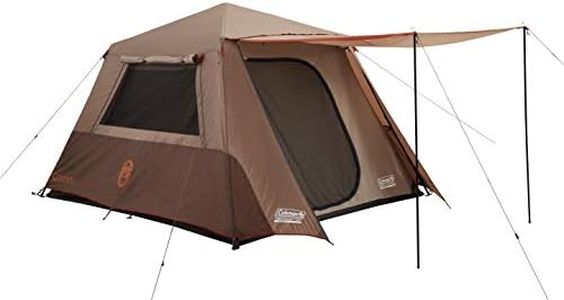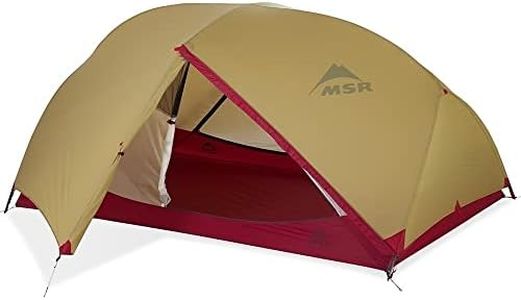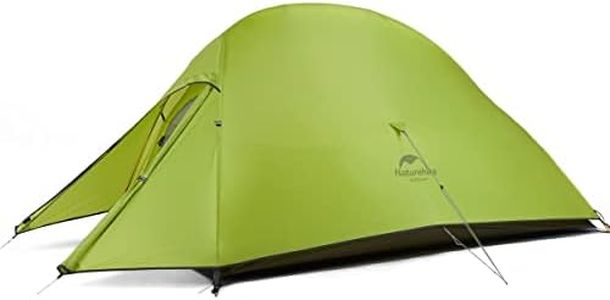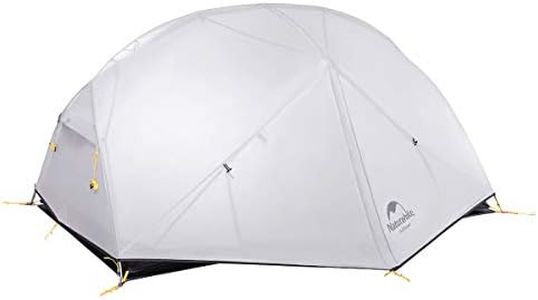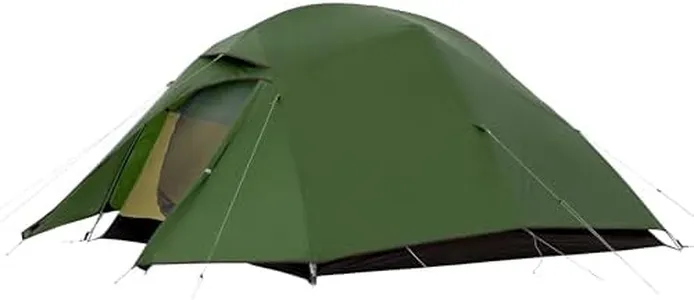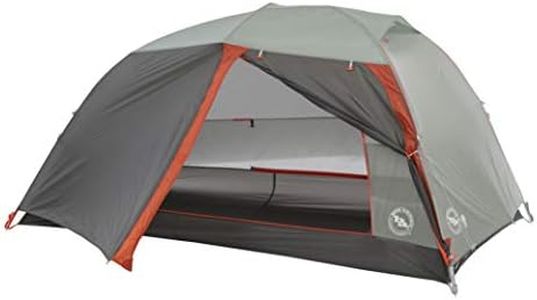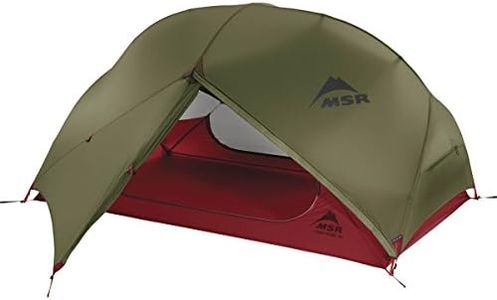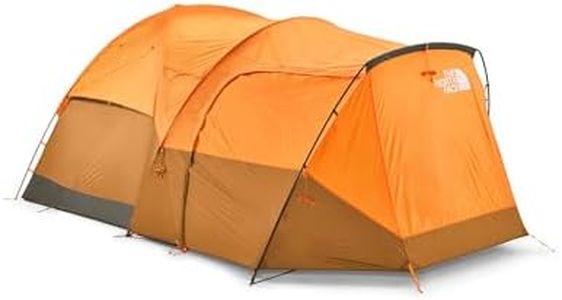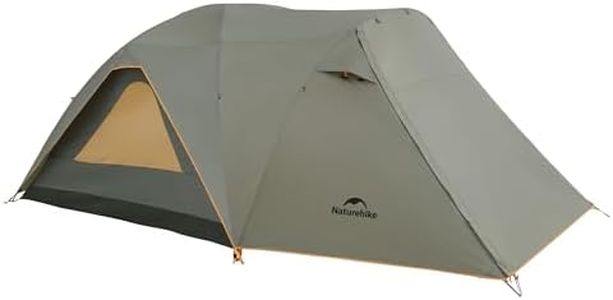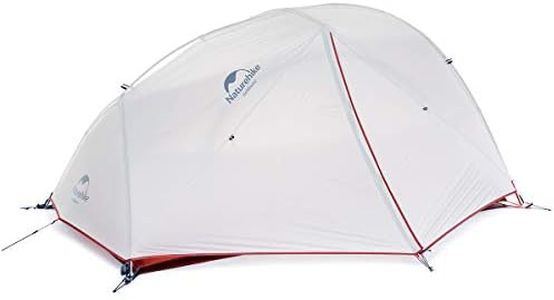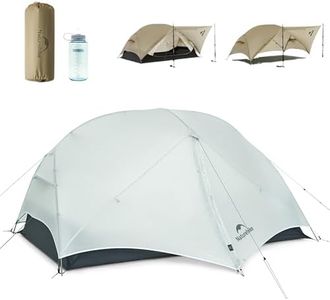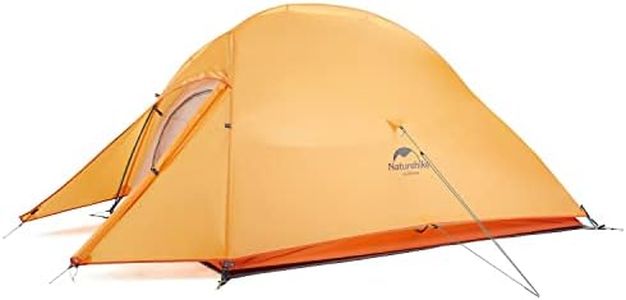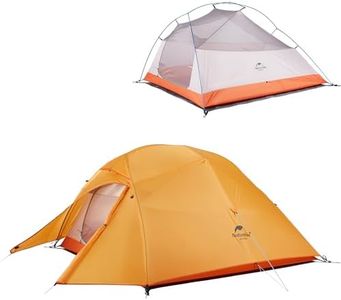We Use CookiesWe use cookies to enhance the security, performance,
functionality and for analytical and promotional activities. By continuing to browse this site you
are agreeing to our privacy policy
10 Best tents
From leading brands and best sellers available on the web.Buying Guide for the Best tents
When shopping for a tent, it's important to think about what kind of trips you'll be taking, how many people will use the tent, and the conditions you might face. Tents come in all shapes and sizes, and choosing the right one can make your outdoor experience much more enjoyable. Start by thinking about the kind of camping you’ll do most—backpacking, car camping, or family trips—since this will help you prioritize what's most important, like weight, space, or durability. Understanding a few key features will help you narrow down your options and find a tent that's best suited to your adventures.CapacityTent capacity refers to the number of people the tent can sleep. This matters because you want enough space for everyone as well as some gear. Common capacities are for 1 up to 8 people or more. Solo and 2-person tents are great for backpackers who want to keep things light and compact, while 4+ person tents work well for families or group camping. Keep in mind, the manufacturer’s capacity ratings usually assume a tight fit, so if you want a bit of extra room, consider sizing up.
SeasonalitySeasonality indicates what kind of weather a tent is built to withstand. Three-season tents are most popular and handle spring through fall, with good ventilation and weather protection. Four-season tents are sturdier and meant for winter and harsher conditions, providing extra warmth and support in wind or snow. If you only camp in mild conditions, a three-season tent is suitable. If you plan to camp in snowy or very windy places, a four-season tent is better.
WeightWeight is how heavy the tent is when packed up. This becomes especially important if you'll be carrying your tent for long distances while backpacking. Lightweight tents (under 4 pounds) are designed for hikers and backpackers, while heavier tents are fine for car camping or short walks from your vehicle. Consider how far you plan to carry your tent and choose accordingly: the longer the hike, the lighter your tent should be.
SetupSetup refers to how easy or complicated it is to pitch the tent. Some tents use simple pole systems or even pop up in seconds, while others have more complicated setups with multiple poles and steps. For beginners or those who arrive at camp late, a quick and straightforward setup is especially helpful. If you expect to move camp often or set up in bad weather, look for a tent known for easy assembly.
Weather ResistanceWeather resistance tells you how well the tent will protect you from rain, wind, and sometimes snow. This is determined by things like rainfly coverage, waterproof coatings, seam sealing, and sturdy pole materials. If you camp in rainy or unpredictable weather, look for features like full-coverage rainflies and high waterproof ratings. In dry, calm places, ventilation and mesh panels might be more important.
Interior Space and VestibulesInterior space covers both floor area and headroom, affecting how comfortable you’ll be inside, especially if you’re stuck inside during bad weather. Vestibules are areas outside the main room, under the rainfly, where you can store muddy boots or bags. If you like more personal space or are camping in a group, look for tents with ample room and at least one vestibule for gear storage.
VentilationVentilation is about airflow inside the tent, which helps reduce condensation and keeps you comfortable. Mesh windows, doors, and roof panels help with this. In hot climates or humid areas, choose tents with lots of mesh and multiple ventilation options. For colder weather, you’ll want some vents, but less mesh to retain warmth.
DurabilityDurability refers to the strength of the tent fabric and poles. Heavier fabrics and strong poles last longer and resist damage, but add weight. For occasional camping in calm conditions, durability may be less of a concern. If you’re a frequent camper or expect rough use, invest in more robust materials.
